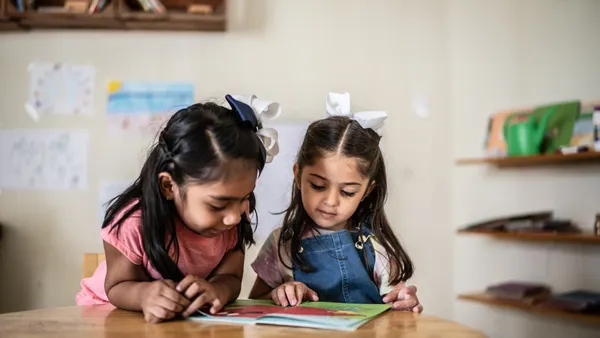Dive Brief:
- Assessment data shows some progress since 2021 in the percentage of K-2 students on track for reading, but that rate of progress has slowed more recently, according to an analysis by Amplify.
- The percentage of K-2 students ready for core instruction in early literacy skills is still tracking below pre-pandemic levels. For example, while 58% of 1st graders were on track in 2019-20, that figure dipped to 52% in 2022-23 and then inched up to 54% in 2023-24, according to data from recent the Dynamic Indicators of Basic Early Literacy Skills, or DIBELS, assessments.
- Only about half of students across grades K-2 are on track for learning to read and 3 in 10 students are far behind, data collected from the middle of this school year shows. In recent years, many states and districts have invested in science of reading initiatives to improve literacy rates.
Dive Insight:
The data shows that too many students are at risk of failing to read proficiently by the end of 3rd grade and that literacy rates in the U.S. remain a concern, according to Amplify, a curriculum and assessment company that uses its mCLASS platform to help teachers administer DIBELS.
Changing this trajectory "requires schools and districts to act now and review their approaches in all grades,” said Susan Lambert, chief academic officer of elementary humanities at Amplify, in a statement. “Schools that deliver strong outcomes focus on building a solid foundation at the start and intervening quickly when students need extra support, rather than trying to play catch up later, when it can be more difficult.”
Percent of K-2 students on track for reading
A bright spot in the assessment results, Amplify noted, is a narrowing of disparity gaps, with Black and Hispanic students having achieved greater gains in the past two years than their Asian and White peers.
For example, mid-year 2023-24 data for kindergartners found that 55% of Black and 47% of Hispanic students to be on track, compared with 61% of White and 73% of Asian students. Although Black and Hispanic students' assessment results still lag behind, this most recent testing data shows improvements of 13 percentage points for Black students and 8 percentage points for Hispanic students compared to two years prior.
In the same period, White kindergartners saw a 4 percentage point improvement and Asian students a 3 percentage point increase.
But when comparing 2019-20 to 2023-24 assessment results, only Asian kindergartners have returned to their pre-pandemic performance levels. Black kindergartners are 1 percentage point below, White students are 2 percentage points behind, and Hispanic students are 3 percentage points below their 2019-20 averages.
Data for the analysis includes assessment results from 300,000 students at 1,400 schools in 43 states.
Amplify recommends grade-level core instruction focused on both language development and foundational skills during the school day for all students. Students at risk of falling behind should receive additional foundational skill instruction, the company said.
Last month, the White House and U.S. Department of Education held a event promoting summer learning interventions and experiences as ways to improve academic and emotional well-being for students still recovering from pandemic-related setbacks.












